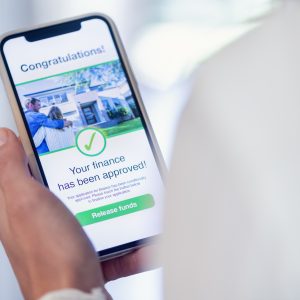Steps to Getting Mortgage Pre-Approval

At this point, you have been through the pre-qualification process, you may have even found your perfect new home, the next step to securing you homeownership future is getting a mortgage pre-approval.
Everyone from first-time homebuyers to seasoned veterans will want to invest the time to make sure they understand the homebuying process and everything that they will need to facilitate a successful purchase. In this article, we are going to explore new home financing and the steps you will need to take to get a mortgage pre-approval.
A GOod Credit Score
Lenders want to know that you have a good FICO score. According to Fair Isaac Corporation (FICO) score is “A FICO Score is a three-digit number based on the information in your credit reports. It helps lenders determine how likely you are to repay a loan. This, in turn, affects how much you can borrow, how many months you have to repay, and how much it will cost (the interest rate).”
First-time homebuyers are often a bit surprised to learn just how seriously lenders take credit scores, but the simple fact is that these numbers are essential, and it will impact the home that you can buy. When it comes to new home financing, a lower credit score does not necessarily mean that you will not be able to buy a home but will likely mean you will receive a higher interest rate. This in turn, means you will be potentially locked into looking at less expensive home options. So, you will want to potentially take proactive steps to boost your credit score in advance if possible.
Verification of Employment
It only makes sense that lenders would want to make sure your employment situation is stable. Therefore, they will likely request pay stubs and they may even call your employer to verify your salary. If you are self-employed or work on commission, be prepared to produce at least two years’ tax returns. In this case, you will also be asked for your business bank statements and profit and loss statements.
Proof of Income and Assets
At the top of every lender’s list is proof of your income and assets. This means they will be looking at everything from your W-2 forms to your bank statements and investment account statements. This data is a good starting point for lenders looking to get a snapshot of your creditworthiness.
Additional Documentation
A key part of the mortgage pre-approval process is having the necessary information ready to go. Everything from your driver’s license to social security cards will be required by your lender. While first-time homebuyers do not have to worry about providing information on their current home, such as mortgage statements, all current homeowners will have to provide ample information about their current residence.
New home financing can seem a little tricky, especially if you have never bought a home before. But there is a major upside to the process. While assembling this information might not be your idea of a fun way to spend an afternoon, try to think about the range of great benefits that come with owning a home, such as making a solid investment and having a place to call your own. Once you have purchased your first home, the process will be much faster and easier in the future. So, roll up your sleeves, and get pre-approved!
